Thailand captivates visitors with its spectacular landscapes and rich cultural heritage, but perhaps nothing defines the Thai experience quite like its vibrant market culture. From floating vendors selling tropical fruits to massive weekend bazaars sprawling across entire neighborhoods, Thai markets offer an intoxicating blend of sights, sounds, and smells that reveal the true heart of the Kingdom.
These bustling commercial spaces serve as community gathering points where locals and tourists alike can experience authentic Thai life in all its colorful glory. Markets in Thailand aren’t merely shopping destinations—they’re living museums of culinary tradition and craftsmanship.
Here is a list of 15 destinations across Thailand where market lovers can indulge in endless exploration.
Bangkok’s Chatuchak Weekend Market
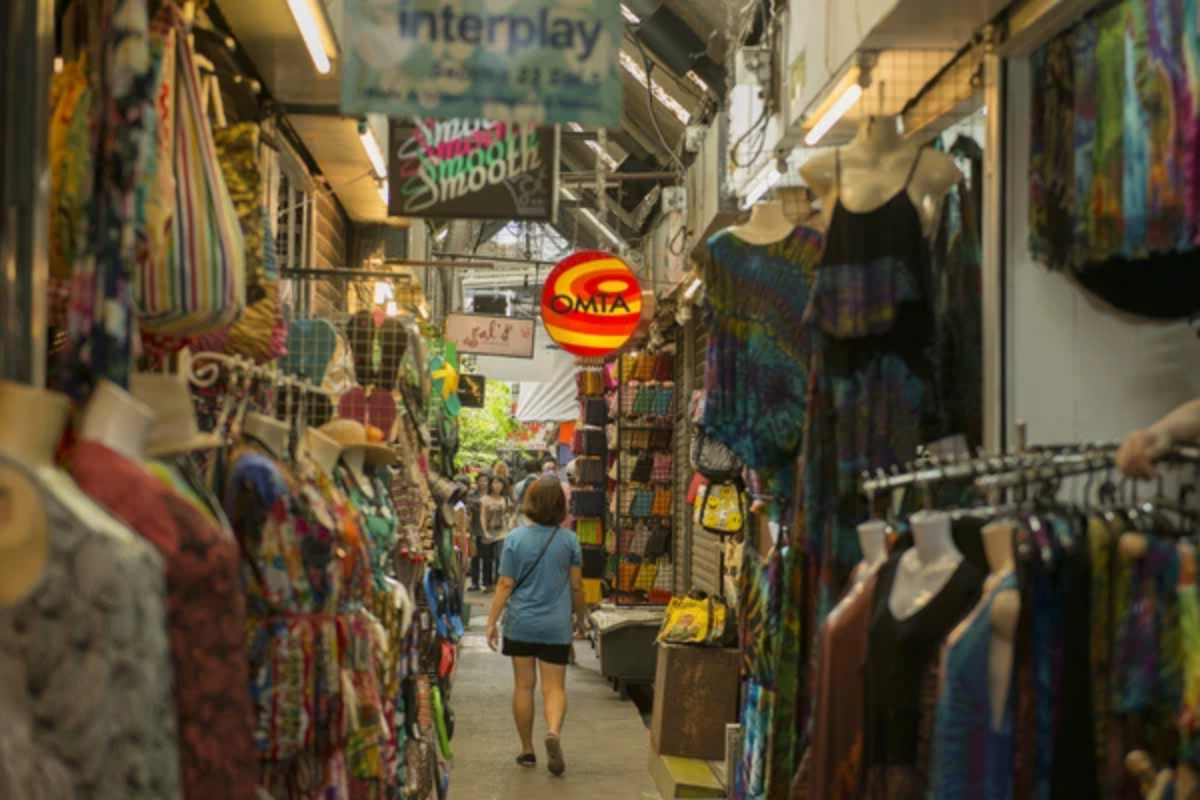
Spanning more than 35 acres and housing over 8,000 stalls, Chatuchak stands as one of the world’s largest markets and a true testament to Thailand’s commercial spirit. Navigating this labyrinthine bazaar feels like exploring an entire city dedicated to commerce, with sections devoted to everything from vintage clothing to exotic plants and handcrafted furniture.
Saturdays bring Thai teenagers hunting for fashion bargains, while Sundays see more families browsing household goods and sampling regional foods from across the country. The market’s sheer scale means even regular visitors continue discovering new corners and hidden gems after dozens of visits.
Amphawa Floating Market
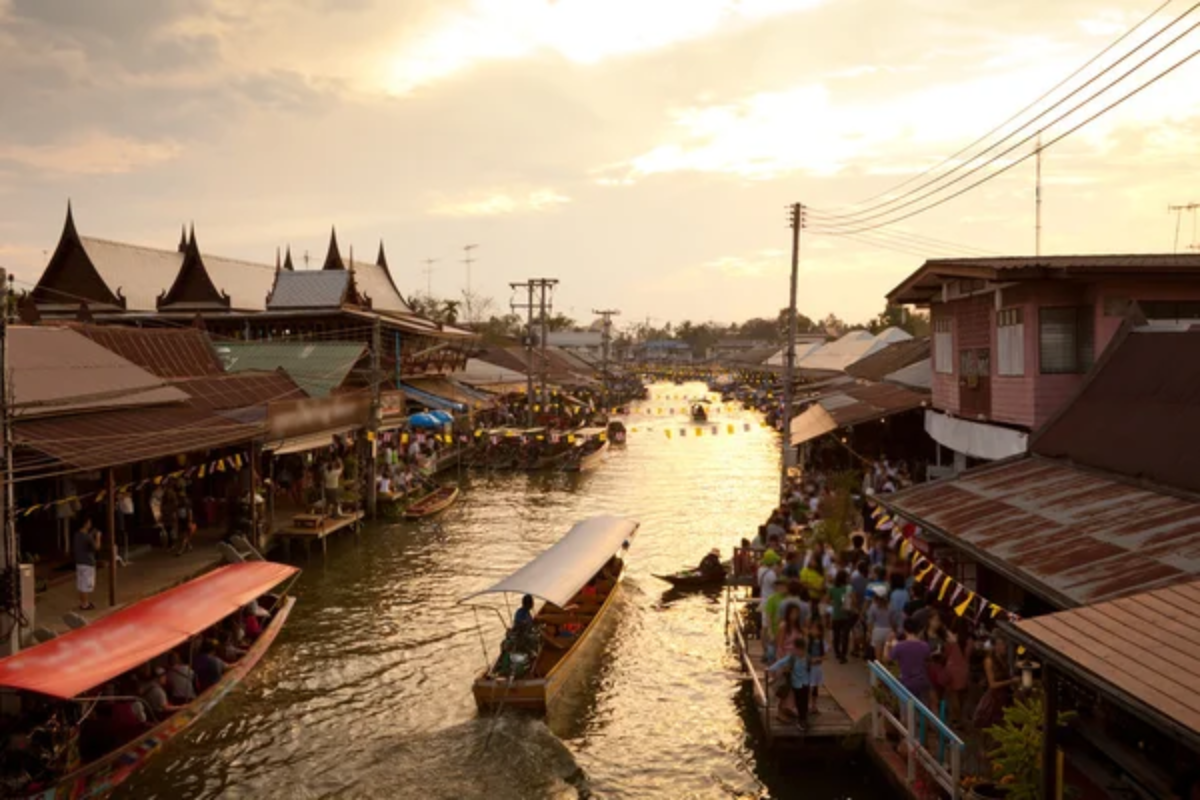
Located about 90 minutes from Bangkok, Amphawa offers a more authentic alternative to the tourist-oriented floating markets closer to the capital. The canal-side wooden walkways fill with visitors each weekend, but most remain Thai rather than international tourists.
Vendors sell their wares from traditional wooden boats moored along the waterway, creating a photogenic scene that captures Thailand’s old-world commercial traditions. As evening approaches, seafood restaurants built on stilts over the water come alive, and boat operators offer twilight tours to see the magical fireflies that inhabit the surrounding mangroves.
Like Travel Pug’s content? Follow us on MSN.
Chiang Mai Sunday Walking Street
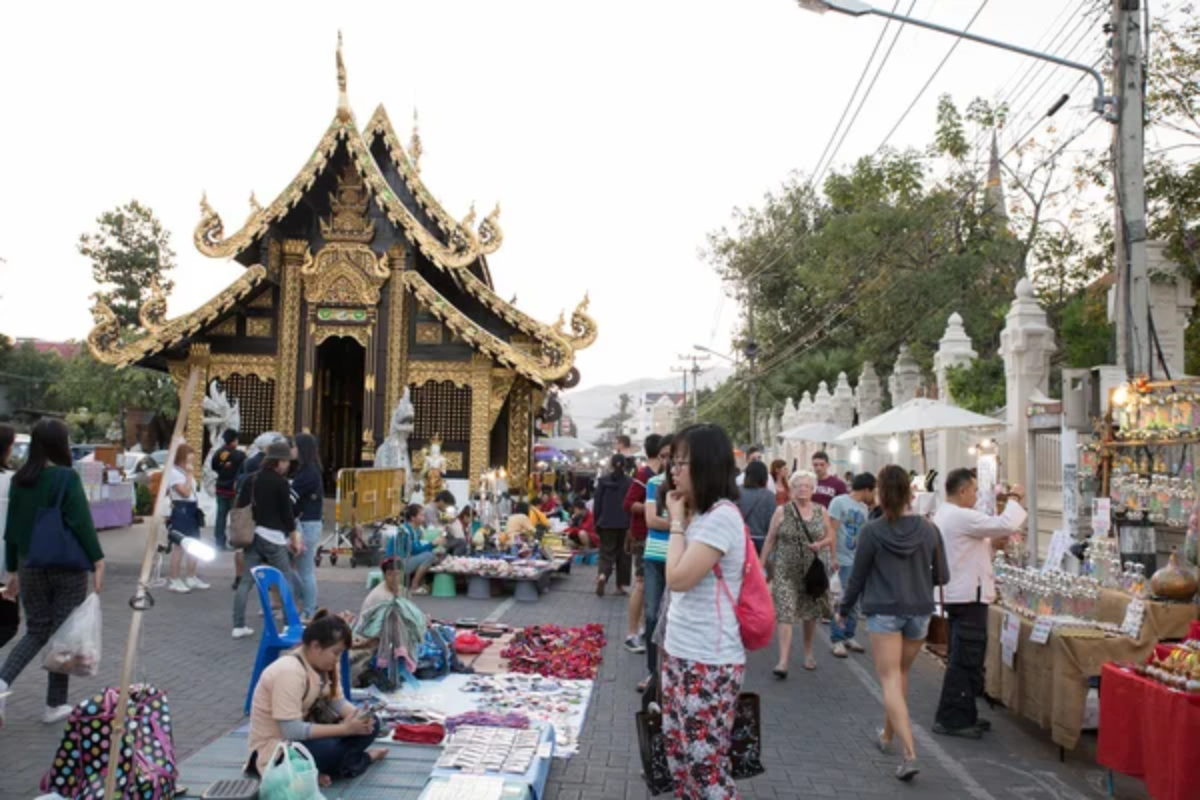
Every Sunday, the old city’s main thoroughfare transforms into a pedestrian wonderland of handicrafts, street performances, and food stalls stretching for over a kilometer. Unlike markets focused primarily on tourists, Chiang Mai’s Sunday market attracts a genuine mix of locals and visitors, creating a festive atmosphere that feels authentically northern Thai.
Artisans from surrounding mountain villages bring handwoven textiles and carved wooden items, while impromptu massage chairs pop up on side streets offer weary shoppers a quick rejuvenation. The adjacent temple grounds host additional food courts where visitors can sample northern Thai specialties like khao soi curry noodles.
Phuket Weekend Night Market
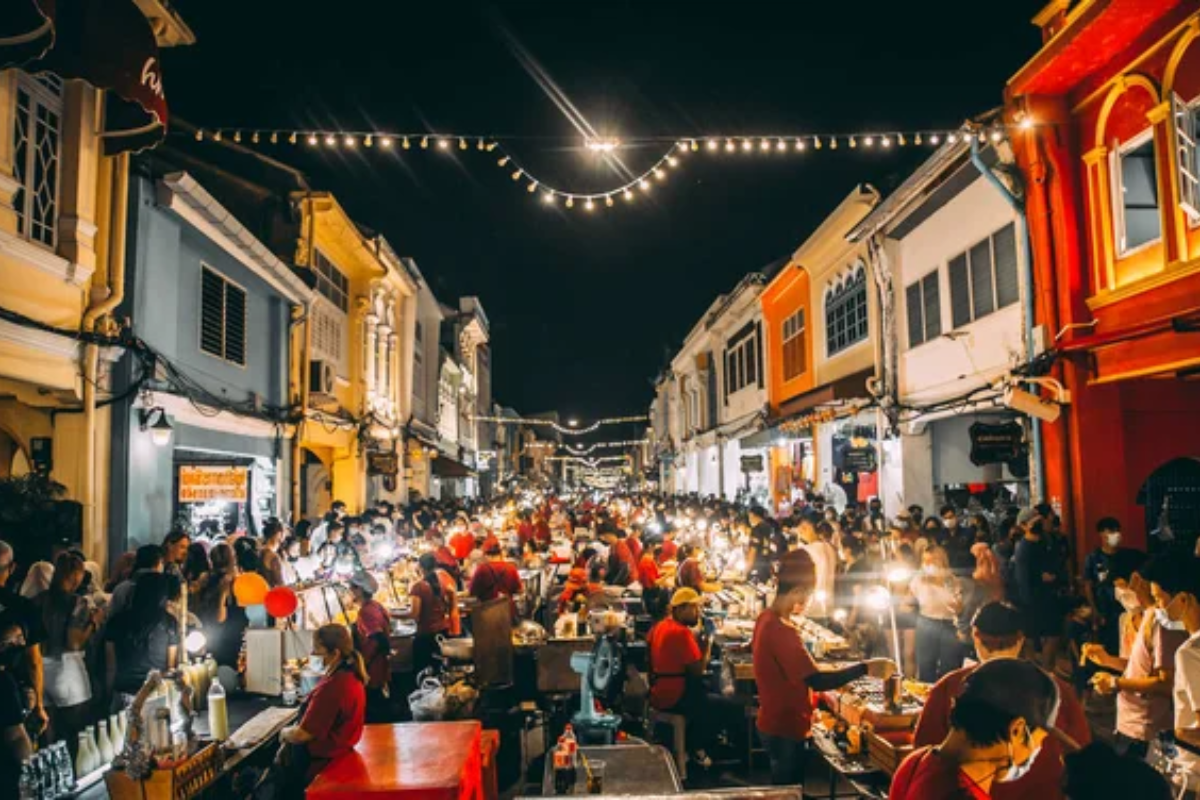
Locally known as Naka Market, this sprawling bazaar transforms a sleepy corner of Phuket Town into a carnival-like atmosphere every weekend. While the island’s beaches get the most tourist attention, this market provides a glimpse into local life rarely seen in resort areas.
The market is divided roughly into sections for clothing, household goods, and an enormous food court where southern Thai specialties take center stage. Unlike more established tourist markets, Naka maintains an unpolished authenticity with constantly changing vendors and a primarily local clientele seeking bargains rather than souvenirs.
Maeklong Railway Market
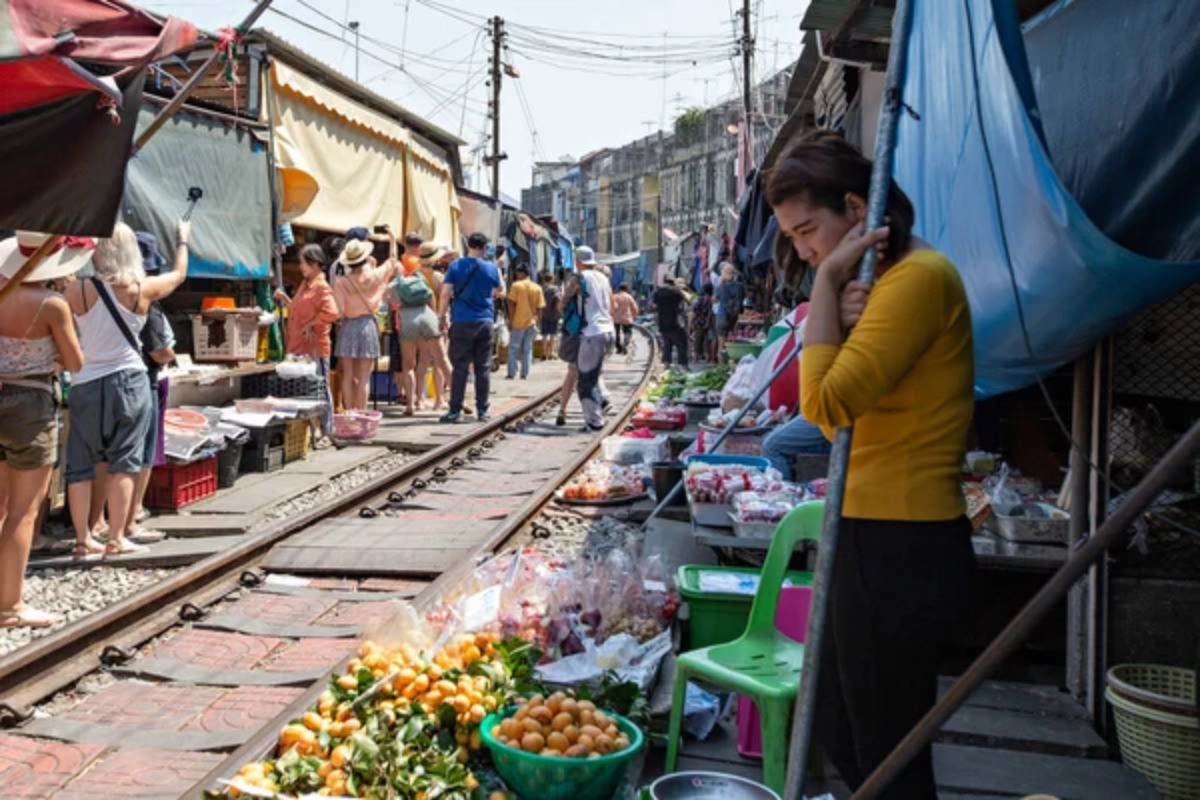
Perhaps Thailand’s most unusual market, Maeklong, has achieved worldwide fame for its precarious position directly on active railway tracks. Several times daily, vendors perform a choreographed routine of folding back awnings and moving produce as trains pass literally inches from their goods.
Once the train clears, business resumes within seconds as if nothing happened. Beyond this remarkable spectacle, the market itself offers an impressive selection of ultra-fresh seafood, tropical fruits, and local vegetables at prices reflecting its distance from major tourist circuits.
Like Travel Pug’s content? Follow us on MSN.
Damnoen Saduak Floating Market
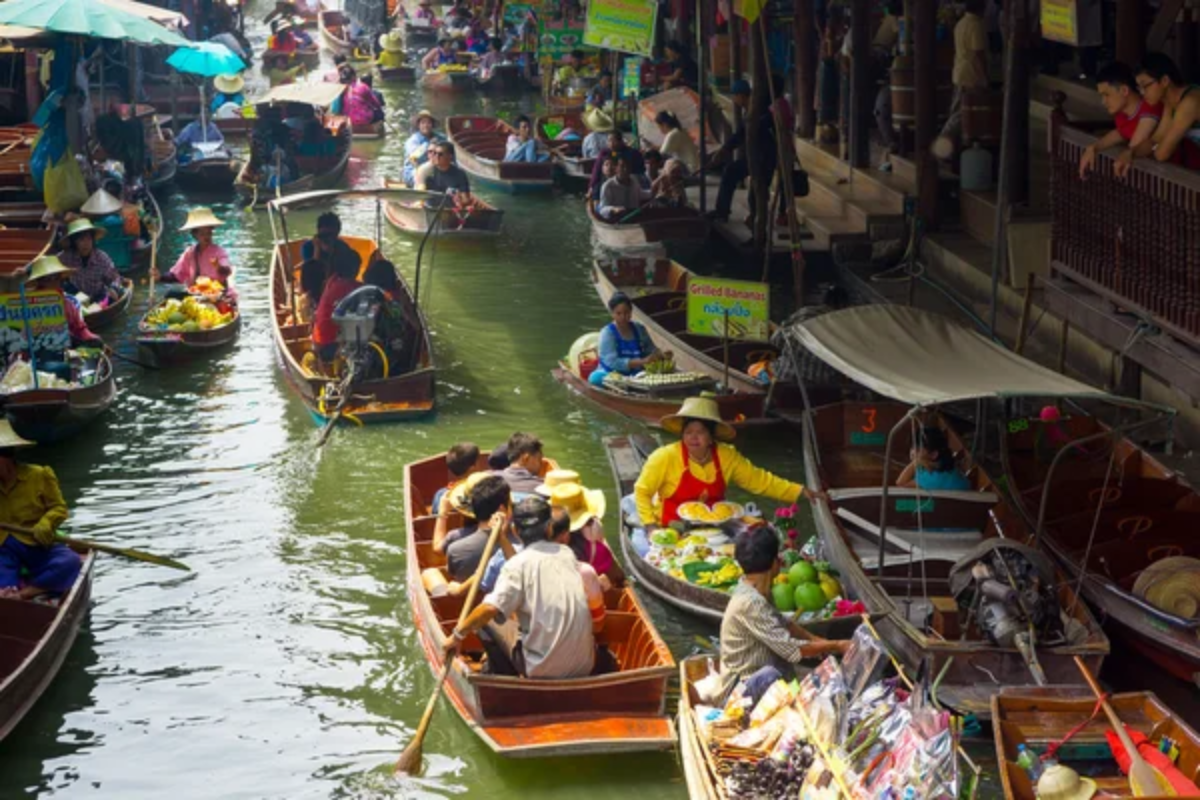
Though undeniably touristy, this floating market about 100 kilometers southwest of Bangkok remains worth visiting for its sheer visual impact. The narrow canals teem with wooden boats piloted by vendors wearing traditional woven hats, creating the quintessential floating market scene.
While souvenir sellers have multiplied over the years, enough authentic food vendors remain to make culinary exploration worthwhile. For the best experience, arrive early, around—around 7 a.m.—before tour buses descend, and hire a private boat to explore quieter side canals where locals still conduct genuine trade on the water.
Pai Walking Street
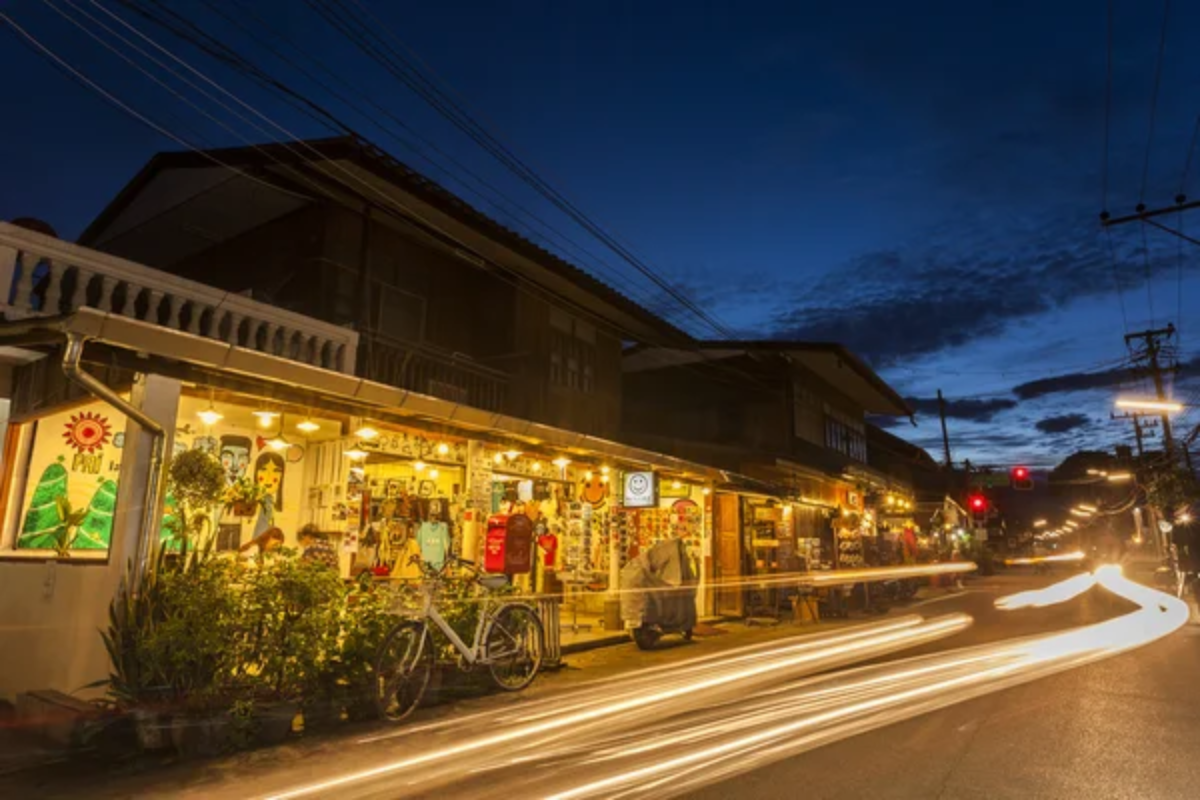
This small northern mountain town transforms each evening as its main street closes to traffic and dozens of vendors set up stalls selling everything from handmade jewelry to artistic T-shirts. What makes Pai’s market special is its Bohemian atmosphere reflecting the town’s popularity with Thai hipsters and international backpackers.
Local hill tribe residents bring traditional crafts, while Thai artists display handmade goods rarely found elsewhere. The market’s relaxed vibe encourages lingering, with musicians often performing impromptu sets as visitors browse stalls under strings of fairy lights.
Hua Hin Night Market
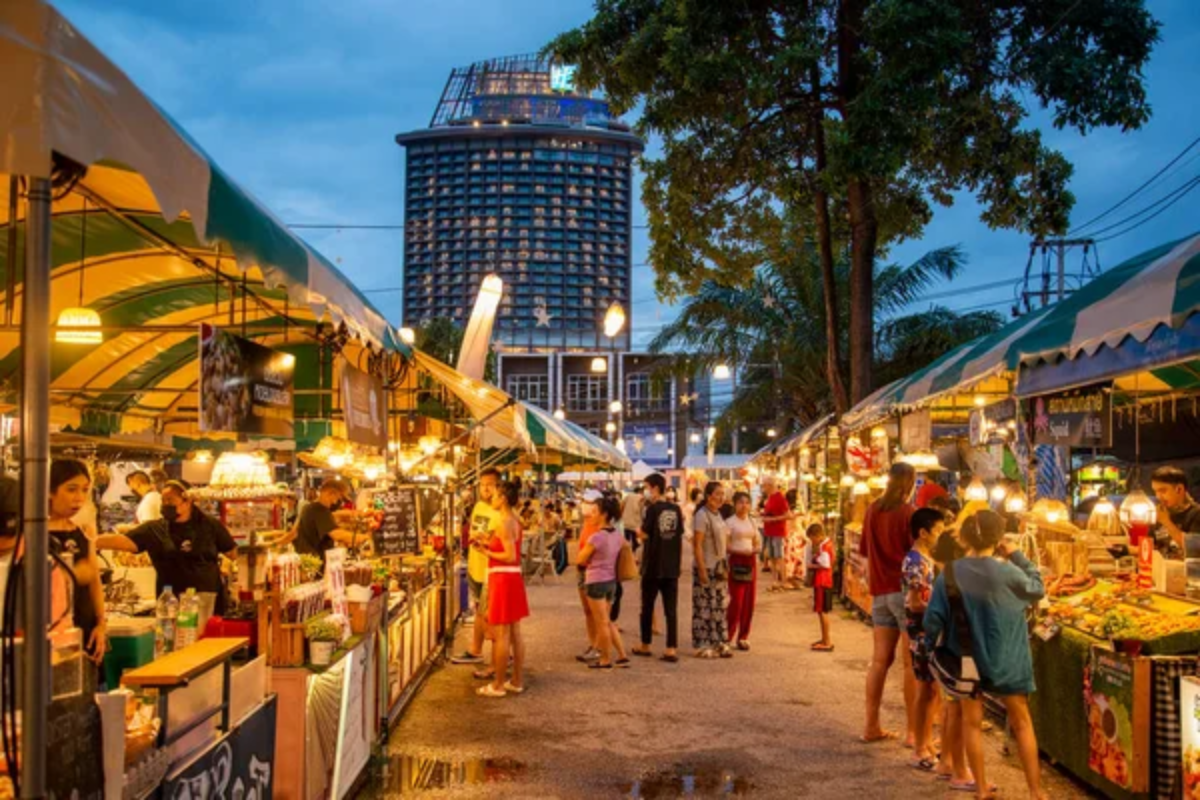
This seaside resort town’s central market stretches along Dechanuchit Road, focusing primarily on seafood and local handicrafts. Unlike rowdier beach markets elsewhere, Hua Hin’s night bazaar maintains a relatively sophisticated atmosphere, reflecting its status as a royal retreat.
Restaurants set up fresh seafood displays where customers select their dinner directly from ice beds before having it cooked to order. The narrow sois (alleys) branching off the main street hold the market’s most interesting finds, including workshops where craftspeople create their goods in plain view of shoppers.
Like Travel Pug’s content? Follow us on MSN.
Chiang Rai Night Bazaar
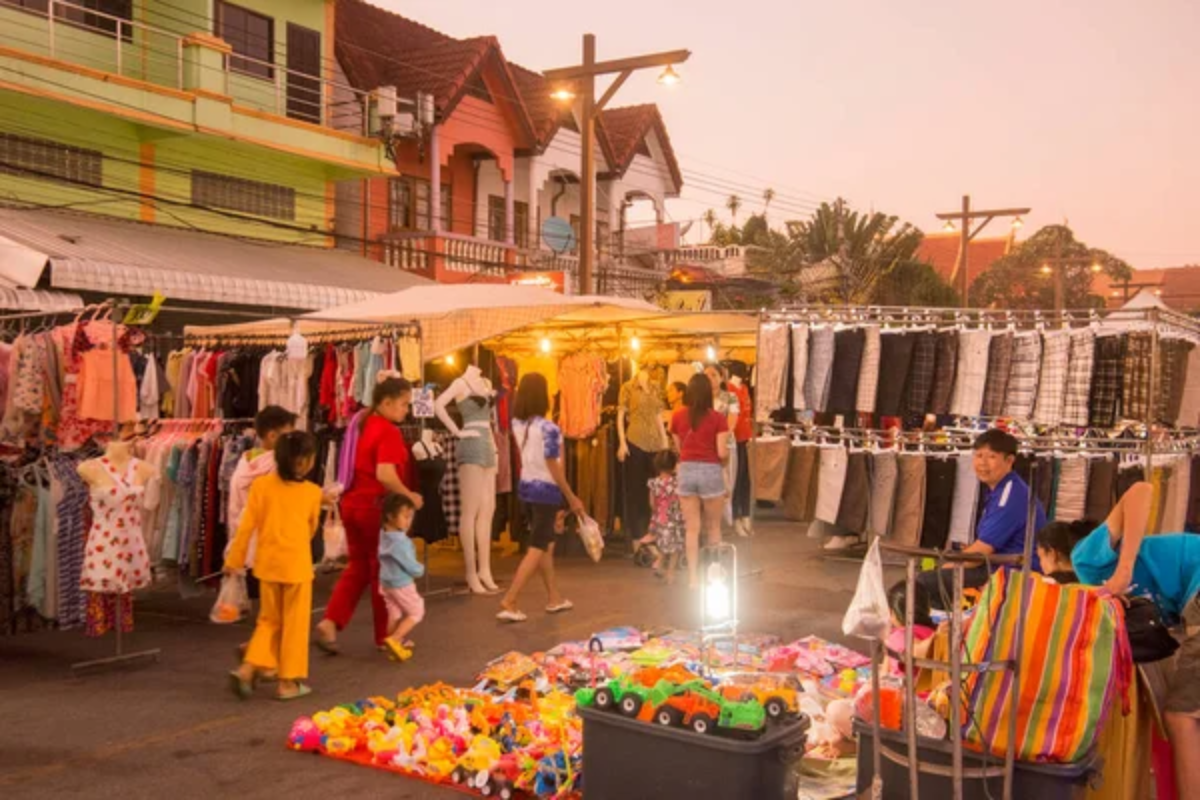
Northern Thailand’s second city offers a more intimate market experience than its larger neighbor, Chiang Mai. The night bazaar centers around a covered food court where visitors can sample Lanna (northern Thai) cuisine while watching cultural performances on a central stage.
Surrounding streets are filled with vendors selling hill tribe handicrafts, many made by artisans from nearby mountain villages. The market’s manageable size and relaxed pace make it perfect for unhurried exploration and meaningful interactions with local vendors eager to explain their crafts and regional specialties.
Warorot Market in Chiang Mai
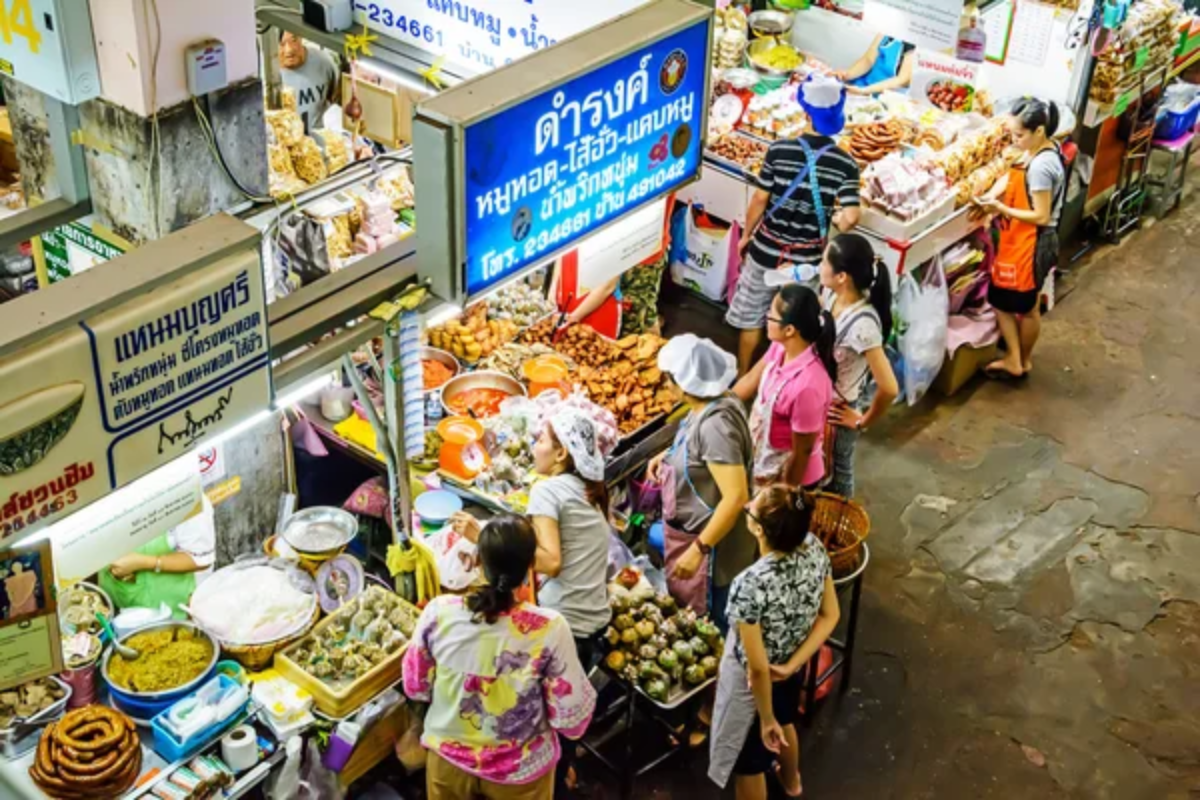
For an everyday market experience untainted by tourism, Chiang Mai’s commercial hub, Warorot, delivers authentic local shopping energy. The three-story covered market houses everything from household goods to temple offerings while surrounding streets specialize in textiles, flowers, and prepared foods.
Each morning, the adjacent Ton Lamyai market fills with fresh flowers shipped from mountain-growing areas, creating spectacular bursts of color and fragrance. Unlike tourist-oriented night markets, Warorot primarily serves local shoppers, offering a genuine glimpse into northern Thai daily life.
Koh Samui’s Fisherman’s Village Walking Street
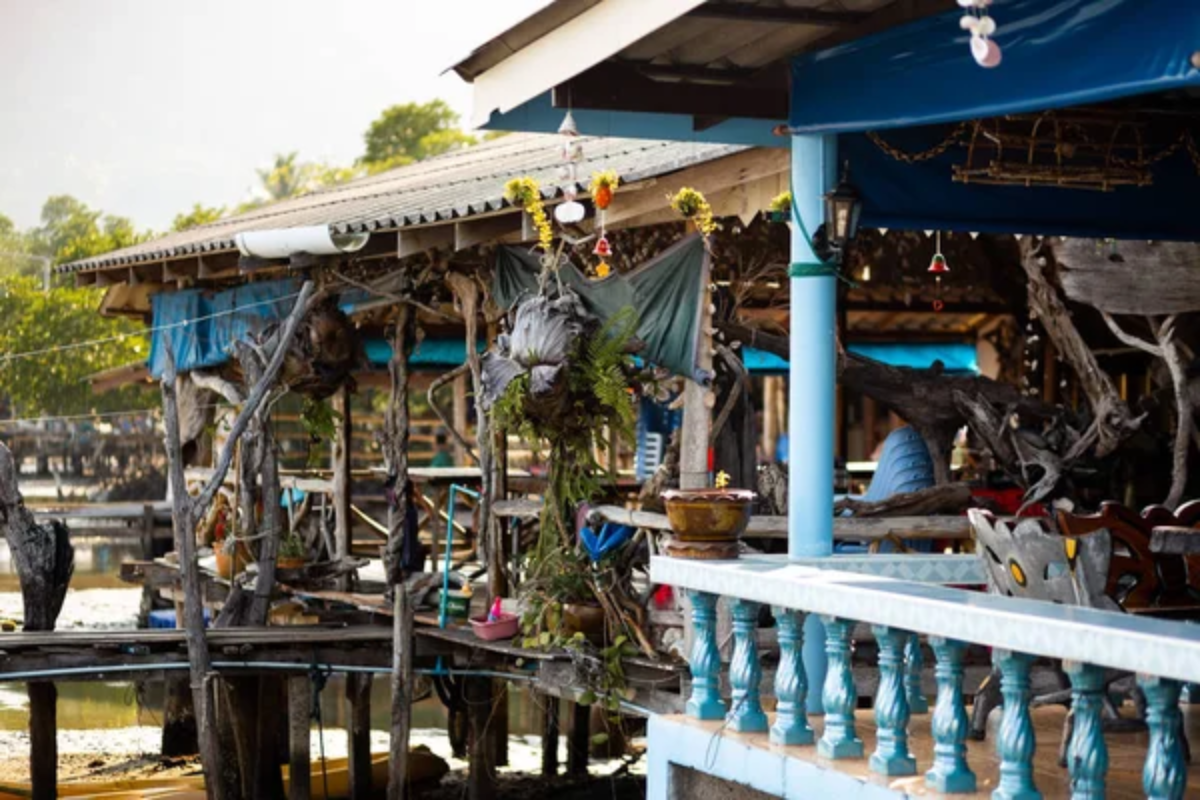
Every Friday evening, the historic Bophut district of Koh Samui transforms from a sleepy beachside road into a vibrant pedestrian market. The area’s unique architectural heritage—blending Chinese shophouses with island influences—provides a characterful backdrop for this weekly event.
Unlike the island’s more raucous entertainment districts, Fisherman’s Village attracts a diverse crowd ranging from families to fashion-conscious Thai visitors. The market specializes in handmade clothing, beach accessories, and local island products, while the permanent restaurants along the strip serve everything from authentic Thai seafood to Mediterranean fusion cuisine.
Like Travel Pug’s content? Follow us on MSN.
Pattaya Floating Market
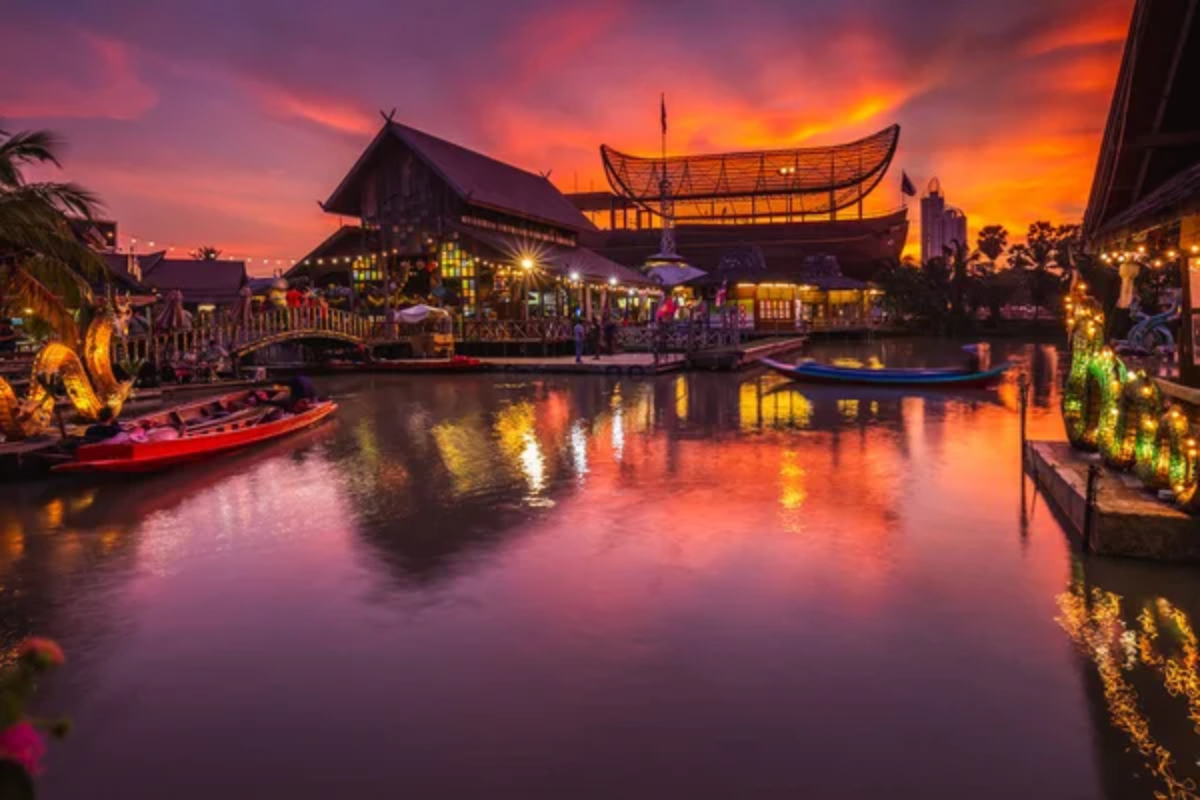
Though purpose-built for tourism rather than organically developed, this extensive water market provides an accessible way to experience Thailand’s floating market tradition. Four sections represent Thailand’s major regions, with architecture and products specific to each area.
Wooden walkways connect different zones, while small boats ply the waterways, selling snacks and souvenirs. Food stands offer an impressive variety of regional specialties that are otherwise difficult to find together in one place.
The market particularly comes alive during cultural performances scheduled throughout the day in various water-adjacent pavilions.
Khlong Toey Fresh Market in Bangkok

For an unfiltered look at how Bangkok residents really shop, this massive fresh market near the city’s port district reveals Thai food culture at its most authentic. Sprawling through narrow covered lanes, the market houses hundreds of vendors selling everything from live eels to obscure herbs used in traditional medicine.
Professional chefs shop alongside grandmothers, buying family dinner ingredients, creating a fascinating cross-section of Bangkok society. While not designed for tourism, adventurous visitors willing to navigate the sometimes slippery floors and pungent aromas will discover the true foundation of Thailand’s renowned culinary tradition.
Ayutthaya Night Market
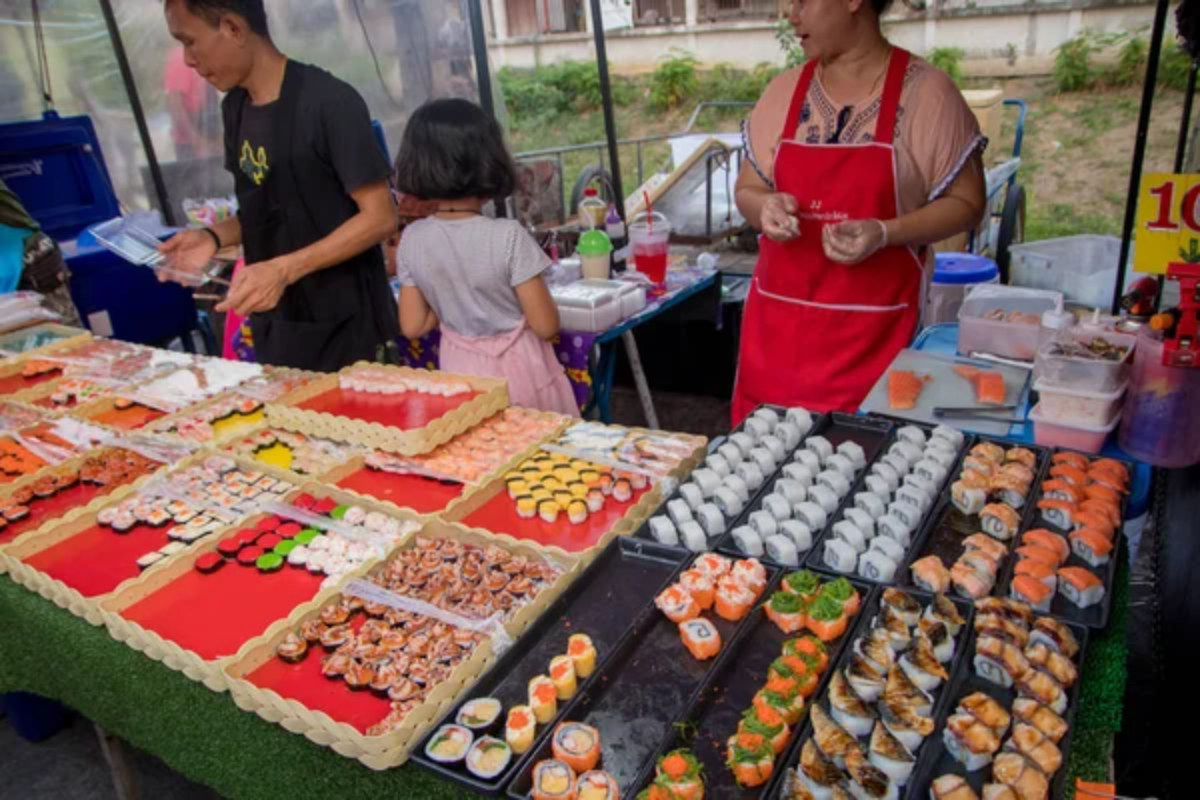
The ancient capital’s evening market unfolds in the shadow of illuminated historical ruins, creating a magical backdrop for culinary exploration. Rather than handicrafts or clothing, this market focuses almost exclusively on food, with vendors specializing in historical recipes dating back to when Ayutthaya served as Siam’s royal center.
The riverside location adds to the atmospheric experience, particularly during the cooler months when outdoor dining becomes especially pleasant. Local specialties include giant river prawns, boat noodles with rich pork broth, and “roti sai mai”, a candy made from palm sugar threads.
Like Travel Pug’s content? Follow us on MSN.
Taling Chan Floating Market in Bangkok
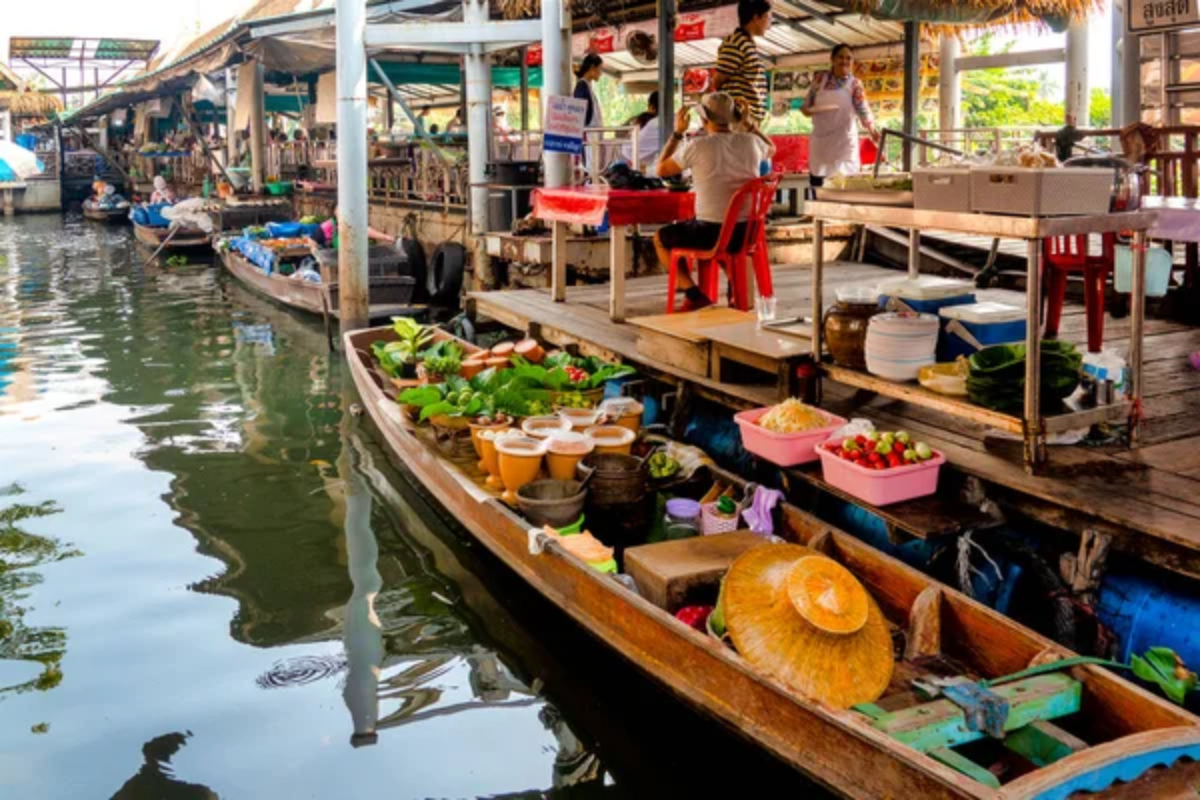
For Bangkok visitors unable to venture to the more famous floating markets outside the city, Taling Chan offers a convenient alternative that maintains surprising authenticity. Located in a residential district of western Bangkok, this weekend market centers around a small canal where vendors in wooden boats sell primarily fresh produce and prepared foods.
The market’s main platform extends over the water, allowing visitors to sit with dangling feet while enjoying seafood prepared on boat-based grills. Despite its proximity to central Bangkok, Taling Chan draws mostly local visitors rather than international tourists.
Thailand’s Market Tapestry

Thailand’s markets reveal the Kingdom’s soul through commerce that transcends mere transactions to become cultural expressions. What makes these spaces special isn’t just their merchandise but their role as community gathering spots where food, socializing, and tradition blend seamlessly.
Whether floating on ancient waterways or sprawling through modern city streets, Thailand’s markets invite visitors to experience the Kingdom through all senses—tasting, touching, smelling, hearing, and witnessing daily life unfold through commerce that has defined Thai society for centuries.
More from Travel Pug

- Cities Growing so Fast You Won’t Recognize Them in 10 Years
- 13 Destinations Where Tourists Regularly Regret Their Trip
- 20 Obscure WWII Sites Even History Buffs Don’t Know About
- 10 Under-the-Radar Mountain Towns That Are Both Affordable and Beautiful
- Remote Villages in Europe Where You Can Live for Free in Exchange for Work
Like Travel Pug’s content? Follow us on MSN.
